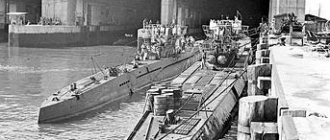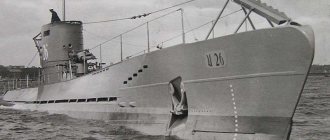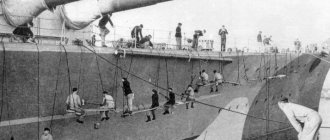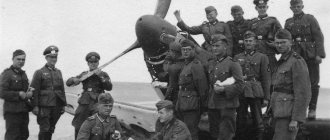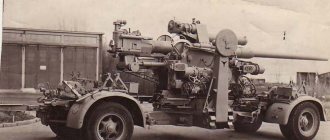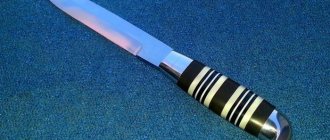This article is about the modern German Navy and the post-war West German Navy. For the German Navy of World War I, see Imperial German Navy. For the interwar fleet of the Weimar Republic, see Reichsmarine. For the German navy of World War II, see Kriegsmarine. For other uses, see German Navy (disambiguation).
Naval military branch of the German armed forces
| This article raises many issues. Please help | This article requires additional links for verification . |
| This article needs editing to conform to the Wikipedia Style Guide. Please help improve it if you can. |
(Learn how and when to remove this message template)
| naval | |
| nautical | |
| Based | January 2, 1956 ; 65 years ago (1956-01-02) |
| A country | Germany |
| Type | naval |
| Size | 16,704 people (April 2022) [1] 65 ships 56 aircraft |
| Part | Bundeswehr |
| German Navy Headquarters | Rostock (Navy Command) |
| Motto(s) | Wir. Dinen. Deutschland . (We. Serve. Germany.) |
| march | "Gruß an Kiel [ ] " |
| Anniversaries | 14 Jun |
| Engagements |
|
| Web site | www.marine.de |
| Commanders | |
| Navy Inspector | Vice Admiral Andreas Krause |
| Deputy Inspector of the Navy | Vice Admiral Rainer Brinkmann |
| Chief of staff | Rear Admiral Karsten Schneider |
| Notable commanders |
|
| Marks of Excellence | |
| Naval ensign | |
| German fleet Deutsche Marine | ||||||||||||||||||
| ||||||||||||||||||
German fleet
(German:
Deutsche Marine
, officially German:
Maritime
listen (help info)) is the German navy and part of the unified
Bundeswehr
(Federal Defense) armed forces of Germany.
The German Navy was originally known as the Bundesmarine
(Federal Navy) from 1956 to 1995, when
the Deutsche Marine
(German Navy) became an unofficial name due to the incorporation of the East German
Volksmarine
(People's Navy) in 1990. It is deeply integrated into the NATO alliance. Its main task is to protect Germany’s territorial waters and maritime infrastructure, as well as maritime communications. In addition, the German Navy participates in peacekeeping operations, provides humanitarian assistance and disaster relief. They are also involved in anti-piracy operations. [2]
History[edit]
Further information: Naval history of World War II
The German Navy has its roots in the Imperial Navy ( Reichsflotte
) revolutionary era 1848–1852.
The Reichsflotte
was the first German fleet to sail under the black-red-gold flag.
Founded on 14 June 1848 by order of the democratically elected Frankfurt Parliament, the Reichsflotte's
ended with the failure of the revolution and it was dissolved on 2 April 1852; Thus, the modern navy celebrates its birthday on June 14th.
A sailor in the German Navy in the 1970s.
Between May 1945 and 1956, the German Mine Sweeping Office and its successors, consisting of former Kriegsmarine
(Warfleet) of Nazi Germany, became something of a transition for the navy, allowing the future Marine
to
use newly experienced personnel.
during its formation. In addition, from 1949 to 1952, the US Navy maintained a Naval Historical Group in Bremerhaven. Kriegsmarine
officers who acted as historical and tactical advisers to the Americans, was instrumental in creating a German element in NATO's senior naval headquarters.
In 1956, when West Germany joined NATO, the Bundesmarine
(Federal Navy), as the navy was colloquially known, was officially created.
That same year, the East German Volkspolizei See
(literally Sea of the People's Police) became
the Volksmarine
(People's Navy). During the Cold War, all warships of the German fleet were assigned to NATO's Allied Forces Baltic Approaches with the naval command NAVBALTAP.
With the annexation of East Germany into the Federal Republic of Germany in 1990, the Volksmarine
together with the entire National People's Army, it became part of
the Bundeswehr
.
Since 1995, the name German Navy
has been used in an international context, while the official name has remained
Marine
without any additions since 1956. As of April 2022, the Navy's strength is 16,704 men and women. [1]
A number of naval forces operated at different periods. See
- Preußische Marine
(Prussian Navy), 1701–1867 - Reichsflotte
(Royal Navy), 1848–1852 - Federal Navy of Northern Germany, 1867–1871
- Imperial German Navy ( Kaiserliche Marine
), 1871–1919 - Reichsmarine
, 1919–35 - Kriegsmarine
, 1935–45 - German Mine Sweeping Directorate, 1945–48
- Volksmarine
, East German Navy (GDR) 1956–1990 - Marine
, 1956–present (
Bundesmarine
, colloquially)
Armadillos
Alas, if you prepare the German Navy for an all-out life-and-death battle, and so that no one gets victory for nothing, then there is no way around it without upgrading the German battleships. The reason is simple - of the 4 Brandenburgs, 2 had already been sold by WWII, and 2 were very outdated, the next two series of battleships, the Kaiser and Wittelsbach, had a real near-zero combat potential due to weak weapons (240-mm cannons with light shells, and besides, the role of BBshek was played by ordinary blanks without filling - even by the standards of the 1890s, this was a laughing stock), and only the last 10 battleships belonging to the Braunschweig and Deutschland series, armed with 280-mm main battery guns, could pose some kind of danger to their full-sized classmates - but only with reservations, since their main caliber was still inferior to the 12-inch guns of their peers. In general, in fact, by the beginning of WWI, Germany did not have a “second-class reserve” in the form of battleships, which needs to be corrected. The recipe is simple - displacement limits are increased, as a result of which 280 mm guns are installed on those battleships that had a 240 mm main battery, and on the last two series - quite 305/40 mm guns. In addition, I allowed myself to somewhat shuffle the composition of the SC ships in order to somewhat unify the calibers within the fleets of the Central Powers, as well as to increase the length of the guns in the medium barbette guns of the Brandenburgs (which all remain in Germany) - in fact, nothing stood in the way of this, and guns of different lengths were installed only due to the inertia of thinking and orders already placed for 280/35 mm guns. As a result, by 1914, the German Navy will have 24 battleships, each of which will be quite competitive with its “colleagues” from other countries, which will significantly strengthen the combat potential of the entire fleet.
Type "Brandenburg": normal displacement 10,500 tons, speed 17 knots, armor up to 400 mm, armament 6 280/40 mm, 8 105/35 mm, 8 88/30 mm guns, 2 450 mm torpedo tubes, crew 568 people
- "Brandenburg", 1890/1891/1893
- "Elector Friedrich Wilhelm", 1890/1891/1894
- "Weissenburg", 1890/1891/1894
- "Wurt", 1890/1891/1893
Type "Kaiser Friedrich III": normal displacement 12500 tons, speed 17.5 knots, armor up to 300 mm, armament 4 280/40 mm, 18 150/40 mm, 12 88/30 mm guns, 6 450 mm torpedo tubes, crew 681 people
- "Kaiser Friedrich III", 1895/1896/1898
- "Kaiser Wilhelm II", 1896/1897/1900
- "Kaiser Wilhelm der Grosse", 1898/1899/1901
- "Kaiser Barbarossa", 1898/1900/1901
- "Kaiser Karl der Grosse", 1898/1900/1902
Wittelsbach type: normal displacement 13,744 tons, speed 18 knots, armor up to 225 mm, armament 4,280/40 mm, 18,150/40 mm, 12 88/30 mm guns, 6,450 mm torpedo tubes, crew 712 people
- "Wittelsbach", 1899/1900/1902
- "Wettin", 1899/1901/1902
- "Zähringen", 1899/1901/1902
- "Schwaben", 1900/1902/1904
- "Mecklenburg", 1900/1901/1903
Type "Brunschweig": normal displacement 15208 tons, speed 18 knots, armor up to 225 mm, armament 4 305/40 mm, 4 210/40 mm, 10 150/40 mm, 18 88/35 mm guns, 6 450 mm torpedo tubes, crew 723 people
- "Brunschweig", 1901/1902/1904
- "Alsace", 1901/1903/1904
- "Hesse", 1902/1903/1905
- "Preussen", 1902/1903/1905
- "Lothringen", 1902/1904/1906
Deutschland type: normal displacement 15190 tons, speed 18 knots, armor up to 225 mm, armament 4 305/40 mm, 14 190/45 mm, 20 88/35 mm guns, 6 450 mm torpedo tubes, crew 840 people
- "Deutschland", 1903/1904/1906
- "Hannover", 1904/1905/1907
- "Pommern", 1904/1905/1907
- "Schlesien", 1904/1906/1908
- "Schleswig-Holstein", 1905/1906/1908
Current operations[edit]
German warships regularly participate in all four NATO maritime groups. The German Navy also participates in operations against international terrorism such as Operation Enduring Freedom and NATO's Operation Active Endeavor.
Currently, the largest operation in which the German Navy is involved is UNIFIL off the coast of Lebanon. The German contribution to this operation was two frigates, four speedboats and two auxiliary vessels. The naval component of UNIFIL was under German command. [3]
The Navy operates a number of development and test facilities as part of an inter-service and international network. Among them is the Center of Excellence for Confined and Shallow Water Operations (COE CSW), an affiliated Allied Command Transformation Center. The CSW COE was established in April 2007 and officially accredited by NATO on May 26, 2009. [4] It shares the same location with the headquarters of the German 1st Flotilla in Kiel, whose commander is the Director of the COE CSW.
Preparing for war, designing aircraft carriers
In the early 1930s, the German Navy had no experience in building aircraft carriers. At the same time, neighboring Britain already had similar vessels in service. True, most of them were converted from other combat or merchant ships. Given the complete lack of knowledge on this topic, a delegation of designers was sent to friendly Japan, who for several months studied in detail all aircraft carrier projects, noted the advantages and disadvantages of the available ships, and took note of the latest developments.
Upon arrival home, the engineers drew up several projects for re-equipping and creating completely new aircraft carriers. After some time, management decided to begin construction. The new ship was to be 250 meters long at the waterline with an armored hull. The anti-torpedo armor was very weak; the flight deck was planned to be covered with wood. A two-tier hangar was to be located under the runway. Its upper part included 25 aircraft, and the lower part 18. The Japanese installed 2 aircraft lifts on such a ship. However, this quantity was not enough, so the German aircraft carrier was planned to have 3 elevators with a lifting capacity of 6.5 tons each.
Initially, it was planned to build two identical ships, which were designated by letters. Such designations appeared because in Germany it was forbidden to name ships until they were launched. As mentioned above, the main enemy was the English fleet. Hitler planned to attack it in 1944-1945. Up to this point, it was necessary to build 2 aircraft carriers. And in January 1939, the Fuhrer signed the developed plan “Z”, according to which by 1948 the fleet should have 4 ships with aircraft-carrying capabilities.
Equipment [edit]
Ships and submarines[edit]
See also: List of active ships of the German Navy
Baden-Württemberg-
frigate in Wilhelmshaven in April 2022
In total, the German Navy has about 65 ships, including; 10 frigates, 5 corvettes, 2 minesweepers, 10 mine hunters, 6 submarines, 11 supply ships and 20 auxiliary vessels for various purposes. The fleet displacement is 220 thousand tons.
German Navy ships include:
- 4 Baden-Württemberg F125 class frigates (2 commissioned, 2 planned to enter service 2020–2021)
- 3 Sachsen F124 class frigates
- 4 Brandenburg F123 class frigates
- 1 Bremen class frigate F122 (scheduled for decommissioning 2022)
- 5 K130 Braunschweig class corvettes (5 additional units in production, planned entry into service not until 2025)
- 6 Type 212 submarine
In addition, the German Navy and the Royal Danish Navy are collaborating on “Project Ark.” This agreement made the Ark project responsible for the strategic maritime transport of the German armed forces, where a full charter of three tipper cargo and combat ships is already ready for deployment. In addition, these ships are also available for use by other European NATO countries. The total displacement of the three vessels is 60,000 tons. [5] [6] Including these ships, the total tonnage of ships available to Deutsche Marine is
is 280,000 tons.
The procurement of joint support ships (two JSS800s for an amphibious force of 800 soldiers or three smaller JSS400s) was planned for the period 1995–2010, but the program now appears to have been abandoned as it was not mentioned in two recent defense reviews. . The larger ships were intended for strategic troop transport and amphibious operations and would displace between 27,000 and 30,000 tons for 800 soldiers. [7] The German Navy will use the joint support ship HNLMS Karel Doorman (A833) of the Royal Netherlands Navy as part of the integration of the German Marine Corps ( Seebatallion
) to the Royal Netherlands Marine Corps since 2016.
Airplane[edit]
See also: Marineflieger
The naval aviation of the German Navy is called Marinefliegerkommando
.
Marinefliegerkommando
team operates 56 aircraft.
| Type | Source | Class | Role | Introduced | In service | General | Notes |
| Sea falcon | Sweden | UAV | ISR | 2 systems ordered as a test bed for future UAVs on corvettes, 8 more planned | |||
| Puma AE II | United States | UAV | ISR | 2019 | 6 | 3 systems with 6 UAVs, called "LARUS" in the German Navy [8] | |
| DJI Phantom 4 | China | Micro UAV | ISR | 2017 | 5 | [9] | |
| Dornier 228 | Germany | Propeller | Pollution control | 1996 | 2 | ||
| Lockheed P-3C Orion - CUP | United States | Propeller | MPA | 2006 | 7 | The former Royal Netherlands Navy will be decommissioned in 2025 | |
| NH90 Sea Lion | Germany | rotorcraft | SAR/transport | 2018 | 6 | 12 more on order, replacing Westland Sea King | |
| NH90 Sea Tiger | Germany | rotorcraft | A.S.W. | 2025 | 31 on order, replacing Westland Lynx [10] | ||
| Westland Lynx Mk.88 | Great Britain | rotorcraft | A.S.W. | 1981 | 21 years old | Will be replaced by NH90 Sea Tiger | |
| Westland Sea King Mk.41 | Great Britain | rotorcraft | SAR/transport | 1975 | 21 years old | Replaces NH90 Sea Lion |
Westland WG-13 Super Lynx Mk88a German Navy
German Navy boarding party member assigned to the frigate Augsburg
(F213), provides security with a P8 pistol for the remainder of his crew as they board the local cargo hold with a quick rope to conduct a search of the vessel.
Battleships
With German battleships everything is both simple and complicated. There is no need to change anything globally, since these ships are one of the most competitive in the world at that time, and were inferior to their main opponents, the British dreadnoughts, primarily in the field of control systems, artillery caliber and mass, while surpassing them in armor and combat survivability , especially PTZ. And if my conscience does not allow me to do magic with the OMS, then I will still adjust the other two parameters. First of all, this is the number of ship layings - by increasing funding and the number of laying hulls, Germany will receive more dreadnoughts by WWII, and in the first year and a half of hostilities it will acquire the first series of super-dreadnoughts - the fully AI "Friedrich der Grosse" based on the hull " Koenig", with 8 350-mm main guns, which gives Germany its own, albeit short, period of development of early pre-dreadnoughts, which have not yet reached the caliber of guns of 15-16 inches. In addition, the Ostfriesland type will initially be built with turbines and a slightly more powerful propulsion system, which will allow it to maintain a squadron speed of around 21 knots. Apart from this, no global changes are expected - 18 battleships will enter service by the beginning of the war, another 8 will enter service during the conflict, but the very last of them - the only representative of the L20 series to enter service, Arminius, will be ready only for the very the end of the war, and the entire Bayern series will enter service in 1916, and will be able to take part in hostilities by the 2nd half of the year.
Nassau type, normal displacement 18873 tons, speed 19.5 knots, armor up to 270 mm, armament 12 280/45 mm, 12 150/45 mm guns, 6 450 mm torpedo tubes, crew 1087 people
- "Nassau", 1905/1907/1908
- "Westphalen", 1905/1907/1908
- "Rhineland", 1905/1907/1908
- "Posen", 1905/1907/1909
Ostfriesland type, normal displacement 22440 tons, speed 21 knots, armor up to 300mm, armament 12 305/50 mm, 14 150/45 mm guns, 6 500 mm torpedo tubes, crew 1113 people
- "Ostfriesland", 1907/1908/1910
- "Helgoland", 1907/1908/1910
- "Thuringen", 1907/1908/1910
- "Oldenburg", 1908/1909/1910
Type "Kaiser", normal displacement 24330 tons, speed 21 knots, armor up to 350mm, armament 10 305/50 mm, 14 150/45 mm guns, 5 500 mm torpedo tubes, crew 1084 people
- "Kaiser", 1908/1909/1911
- "Kaiserin", 1909/1911/1912
- "Konig Albert", 1909/1911/1912
- "Prince Regent Luitpold", 1909/1911/1912
Type "Konig", normal displacement 25390 tons, speed 21 knots, armor up to 350mm, 10 305/50 mm, 14 150/45 mm guns, 5 500 mm torpedo tubes, crew 1136 people
- "Konig", 1910/1912/1913
- "Grosser Kurfürst", 1910/1912/1913
- "Margrave", 1911/1913/1914
- "Crown Prince", 1911/1913/1914
Type "Friedrich der Grosse", normal displacement 25916 tons, speed 21 knots, armor up to 350 mm, 8 350/45 mm, 14 150/45 mm guns, 5 500 mm torpedo tubes, crew 1078 people
- "Friedrich der Grosse", 1911/1913/1914
- "Anhalt", 1911/1913/1914
- "Palatinate", 1912/1914/1915
- "Franken", 1912/1914/1915
- "Altmark", 1912/1914/1915
Bayern type, normal displacement 28074 tons, speed 21 knots, armor up to 350mm, 8 380/45 mm guns, 16 150/45 mm guns, 5 600 mm torpedo tubes, crew 1187 people
- "Bayern", 1913/1915/1916
- "Baden", 1913/1915/1916
- "Sachsen", 1913/1915/1916
- "Württemberg", 1914/1915/1916
Arminius class (L20), normal displacement 42,000 tons, speed 25 knots, armor up to 350 mm, 8,420/45 mm, 16,150/45 mm guns, 3,600 mm torpedo tubes, crew 1,200 people
- "Arminius", 1914/1916/1918
- "Siegfried", 1914/1916/not completed
- "Beowulf", 1915/1917/not completed
- "Egir", 1916/not completed
Structure [edit]
The German Navy is commanded by the Inspector of the Navy ( Inspekteur der Marine
) with the support of the Navy command (
Marinekommando
) in Rostock.
Forms[edit]
- German Navy Headquarters ( Marinekommando
), Rostock
Einsatzflottille 1
(HQ Kiel)
- 1st Corvette Squadron ( 1. Korvettengeschwader
), Warnemünde - First Submarine Squadron ( 1. Ubootgeschwader
), Eckernförde Submarine Training Center (
Ausbildungszentrum Unterseeboote
), Eckernförde
), Kiel
), Kiel
Patrol Boat Squadron (
7. Schnellbootgeschwader
), Warnemünde
), Eckernförde
),
Eckernförde
)
- Einsatzflottille 2
, Wilhelmshaven
- 2nd Flotilla Headquarters
- 2nd Frigate Squadron ( 2. Fregattengeschwader
), Wilhelmshaven - 4th Frigate Squadron ( 4. Fregattengeschwader
), Wilhelmshaven - Auxiliary Squadron ( Trossgeschwader
), Wilhelmshaven - Naval Command Base Wilhelmshaven
- Naval Aviation Command ( Marinefliegerkommando
), Nordholz
- Naval Aviation Wing 3 ( Marinefliegergeschwader 3
), Nordholz - Naval Air Wing 5 ( Marinefliegergeschwader 5
), Nordholz
- Naval Support Command ( Marineunterstützungskommando - MUKdo
) - Naval Medical Institute ( Schiffahrtsmedizinisches Institut
), Kiel
Mürvik Naval School
- Naval Academy ( Marineschule Mürwik
), Flensburg - Petty Officer
School (
Marineunteroffiziersschule
), Plön - Engineering school ( Marinetechnikschule
), Parow, near Stralsund - School of Naval Operations ( Marineoperationsschule
), Bremerhaven - Naval Damage Control Training Center ( Ausbildungszentrum für Schiffssicherung
), Neustadt, Holstein
Other fleet
With other classes of ships, everything is much more complicated. According to many admirals of that time, both cruisers and even destroyers acted as auxiliary ships against the backdrop of first-line ships, i.e. battleships and battlecruisers, and therefore many countries practically did not build them. In Germany, until the end of the war, both light cruisers and destroyers were built, so it will probably not be necessary to increase their numbers, and it will be more problematic to find funds for these matters. The only class of ships where expansion in numbers is very likely is submarines. For reasons that I do not want to name yet, the submarine war for Germany in relation to Great Britain will be much more promising and profitable, the Germans’ starting positions at the time of its announcement are much better than the real one, and therefore they can build submarines much more actively than the real one. But this is still only an assumption, which, firstly, requires a much more detailed study of the entire AI-PMV, and secondly, accurate estimates of Germany’s capabilities in the given AI conditions. It is possible that Germany will not have resources left to expand the construction of submarines relative to real, since the entire surplus will be spent on ground forces + the completion of battleships and battlecruisers, or even the same cruisers and destroyers, which will be urgently needed during military operations.
Ranks [edit]
Officers[edit]
| NATO code | OF-10 | OF-9 | OF-8 | OF-7 | OF-6 | OF-5 | OF-4 | OF-3 | OF-2 | OF-1 | OF (D) | Student officer | ||||||||||||||||||||||||
German fleet
| No equivalent | Enlisted rank plus star indicating cadet's career | ||||||||||||||||||||||||||||||||||
| Admiral | Vizeadmiral | Rear Admiral | Flottillen-admiral | Kapitän zur See | Fregatten- captain | Korvetten- kapitän | Stabskapitän - lieutenant | Captain-lieutenant | Oberleutnant zur See | Leutnant zur See | Oberfähnrich zur See | Fahnrich zur See | Seekadett | |||||||||||||||||||||||
Petty Officers and ordinary sailors[edit]
| NATO code | OR-9 | OR-8 | OR-7 | OR-6 | OR-5 | OR-4 | OR-3 | OR 2 | OR-1 | |||||||||||||||||||||||||||
German fleet
| ||||||||||||||||||||||||||||||||||||
| Oberstabsbootsmann | Stabsbootsmann | Hauptbootsmann | Oberbotsmann | Bootsmann | Obermaat | Maat | Oberstabsgefreiter | Stabsgefreiter | Hauptgefreiter | Obergefreiter | Gefreiter | Matrose | ||||||||||||||||||||||||
| German fleet (designated officer)
| No equivalent | No equivalent | ||||||||||||||||||||||||||||||||||
| Oberfähnrich zur See | Fahnrich zur See | Seekadett | ||||||||||||||||||||||||||||||||||
Future developments[edit]
- The German government announced the selection in January 2022 and award in June 2022 of a contract to Damen Group as the main contractor, along with partners Blohm + Voss and Thales, for the delivery of four MKS 180 multi-role combat ships ( Mehrzweckkampfschiff 180
) to German frigates. Navy with the ability to install 2 additional ships. The vessels will be built at the Blohm + Voss shipyard in Hamburg and at other shipyards of the North German Lürssen Group. [eleven] - Two advanced Type 212 submarines with significant improvements (overall design) will be designed and purchased by Norway in the next decade. [12]
- Five additional Braunschweig-class corvettes have been ordered and will be delivered between 2020 and 2023. [13]
- The NH90 NFH 'Sea Tiger' helicopters have been ordered to replace the Lynx in the ASW/AsuW role, originally ordered by the German Army as a variant of the NH90 TTH, scheduled for delivery from 2025. Up to 31 copies could be ordered.
- The 18 NH90 MRH Sealion helicopters are unarmed and will replace 21 Sea King helicopters from Naval Air Wing 5 in the SAR and ship transport role (VertRep), the delivery of which is planned from 2019.
- The Saab Skeldar has been ordered as a test bed for a future naval UAV for the Brunswick corvette class. [14]
- Integration of the German Marine Corps (Seebatallion) into the Netherlands Marine Corps and use of Royal Netherlands Navy amphibious assault ships such as the joint support vessel HNLMS Karel Doorman (A833) since 2016.
- In June 2022, it was announced that the German Navy and the Royal Netherlands Navy will cooperate and plan for replacements of both the future Sachsen-class frigate and the De Zeven Provincien class frigate from 2030.
- 2 combat support ships (Type 707) are planned to be replaced by Rhön-class ships (Type 704), commissioning is scheduled for 2024.
Development of the Kaiserliche Marine before the First World War
Germany in the world of Russia Pragmatic II is united in the same way as in reality, and in general has the same development trends. However, by expanding the "sphere of influence", successful investments in "junior partners" and allies, as well as the Great Author's Arbitrariness, I give Germany higher rates of economic growth. In addition, the conditions of the AI world have been quite tense since the end of the 19th century, competition between countries is more serious, and therefore military expenses will be higher than in reality - and in the case of Germany this is quite possible, since it, having a considerable fleet and a large army, spent less on the military in specific terms (16% of all expenses in 1908) than, for example, the pacifist United States (35%), Russia, which was greatly shaken after the Revolutionary War and the revolution (19%), or the main enemy of the Germans, France (29 %). I will not give specific figures on how much better the German fleet will be financed, but instead will simply state the result.
The most important of them is smaller restrictions on the size of ships being built, which will make it possible to increase the size of battleships and upgrade them. In addition, in the era of dreadnoughts, this will allow increasing the number of hulls laid down while maintaining the pace of financing and construction. It seems that the changes are insignificant - but this will make it possible to compete with Great Britain much more effectively, and there will also be a reserve in case of some unforeseen surprises (primarily a likely increase in the number of cruisers and destroyers built). In addition, this will affect shipbuilding in wartime, which will flutter longer, and it will be possible to complete more ships. This will also be favored by a different course of the war on land, but here I will try to avoid spoilers for now - I will only note that the issue of resources (both for industry and food) for the Central Powers in AI will be much less acute.
Otherwise, everything remains the same or almost the same as in reality. Strategically, Germany plans the war in almost the same way as in reality - defense and support of the coastal flank in the Baltic, an offensive against the British in the North Sea. At the same time, due to certain circumstances, the German fleet can act much more boldly, and during the war it will receive a number of important geographical advantages, which in the future will allow it to cause huge problems for Royal Navy. At the same time, a stronger Baltic Fleet will force it to be frequently diverted to the east, and most likely Germany will have to constantly keep the 1st series of its dreadnoughts and all its battleships there. The development of the fire control system and artillery on the ships of the Kaiserlich Marine also remains real, which has its advantages (the level of training of the crews) and disadvantages (the lag in the technical part of the fire control system from the British and many others). However, all this may change during the war, because in the Union of Central Powers Germany, although Germany has the first violin at sea, will have strong and developed allies who, as their technologies develop, will be able to share them with the Germans, thereby compensating for the technical lag the latter. In short, for the Germans everything looks a little more confident, and therefore they can impose “Der Tag” on the British more persistently than in reality - although the British will also have an improvement relative to the real thing, but more on that in the following articles.
Further reading (COE CSW)[edit]
- Jan Wiedemann: CSW Council of Europe celebrates its fifth anniversary; in: NAVAL FORCES III / 2014 p. 90 f.
- Hans-Joachim Stricker: Center of Excellence for Operations in Confined and Shallow Waters, CSW COE - Das COE als Ausdruck unserer besonderen nationalen Fähigkeiten im Bündnis; in: Marineforum 6-2007 p. 3 f.
- Fritz-Rudolf Weber: Center of Excellence for Confined and Shallow Water Operations - Think Tank for NATO; in: Marineforum 1/2-2010 p. 11 words
- Hans Georg Buss, Stefan Revesell: Naval IEDs and harbor defense: a joint effort; in: Transformer Autumn 2013 Volume 9 Issue 2 p. 18
- Rahn, Werner. "The German Navy from 1848 to 2016: Its Development and Course from Confrontation to Cooperation." Naval War College Review
70.4 (2017). online
Links[edit]
- ^ ab "Aktuelle Personalzahlen der Bundeswehr [Current personnel strength of the Federal Defense]". Retrieved May 28, 2020.
- "Archival copy". Archived from the original on March 31, 2022. Retrieved March 30, 2022.CS1 maint: archived copy as title (link)
- "Bilanz und Ausblick". Archived from the original on January 1, 2009. Retrieved December 18, 2009.
- Deutsche Marine - press release: Neues Nato-Expertenzentrum an der Kieler Förde nimmt Fahrt auf; Faermann, 2009
- "Ships Chartered for Project ARK". Archived from the original on June 8, 2011. Retrieved October 27, 2010.
- "Project ARK". Archived from the original on November 28, 2010. Retrieved October 27, 2010.
- "Inspekteur der Marine: Zielvorstellung Marine 2025+" (PDF). Geopowers.com
. Archived (PDF) from the original on June 1, 2010. Retrieved March 14 +2016. - https://www.flugrevue.de/militaer/unbemanntes-fluggeraet-von-aerovironment-puma-ae-fuer-die-marine/
- https://dipbt.bundestag.de/doc/btd/19/010/1901082.pdf
- Thomas Weigold (July 31, 2019). "Sea solution NH90-Hubschrauber als Ersatz für SeaLynx bekommen (m. Nachtrag)". Augen geradeaus! . Retrieved August 7, 2022.
- damen.com - DAMEN AND BLOHM + VOSS SELECTED FOR CONSTRUCTION OF GERMAN FRIGATES MKS180
(January 14, 2022). - Nachrichtenfernsehen, n-tv. "Marine U36 in Dienst: Bundeswehr bekommt neue U-Boote". n-tv.de
. Archived from the original on October 13, 2016. Retrieved November 8 +2016. - "The coalition will Boote kaufen: Bundeswehr soll fünf neue Korvetten bekommen". Frankfurter Allgemeine Zeitung
. October 14, 2016 ISSN 0174-4909. Archived from the original on October 15, 2016. Retrieved November 8 +2016. - "Archival copy". Archived from the original on September 30, 2022. Retrieved September 30, 2022.CS1 maint: archived copy as title (link)

